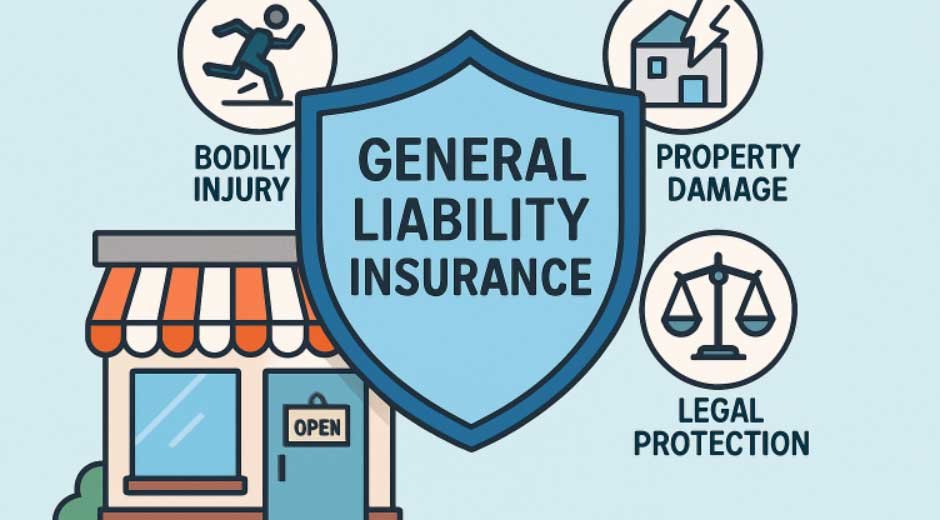Running a small business is a journey full of accomplishments and uncertainty. Every day brings new opportunities, but it also means navigating risks that could set you back unexpectedly. Many owners overlook how a single accident or lawsuit can disrupt years of hard work. Obtaining coverage for business risks is crucial for ensuring that your business remains resilient when facing bodily injury, property damage, or personal liability claims. General liability insurance can feel complicated, but it’s one of the simplest ways to solidify your company’s foundation for long-term success. With the right policy, you secure peace of mind—the freedom to grow, innovate, and focus on customers rather than worrying about legal or financial threats lurking around every corner.
Insurance isn’t just for the biggest firms. Even home-based and micro-businesses are exposed to risks that could trigger costly claims. Often, what stands between recovery and closure is an insurance policy that steps in when you need it most. Understanding what this coverage entails can make all the difference in your trajectory as a business owner.
Recent trends show that small business insurance needs have evolved, especially as litigation grows and unexpected challenges emerge in today’s competitive landscape. Knowing what to look for in a general liability policy—along with the latest developments in the insurance market—will help you choose protection tailored to your business’s unique circumstances. For historical context, the Insurance Information Institute regularly publishes data and trends that show small businesses must continually adapt to new risks.
What Is General Liability Insurance?
General liability insurance is a foundational policy designed to protect your small business from the unexpected. It helps cover costs related to legal claims for bodily harm, property damages, or personal and advertising injury arising out of your business operations. With the rise in lawsuits against small companies, this policy isn’t just a recommendation—it’s a necessity for anyone wanting to weather potential storms financially intact.
Why Small Businesses Need It
Small businesses are frequently targeted for legal action due to their perceived vulnerability and limited resources. A slip-and-fall accident or a claim of reputational harm can escalate quickly, with legal and settlement costs that could threaten your entire operation. By maintaining general liability coverage, you’re investing in your business’s ability to survive, recover, and grow after an adverse event—no matter your size or industry.
Components of Coverage
- Bodily Injury:Pays for medical bills, legal costs, and settlements if someone is injured at your place of business or as a result of your activities.
- Property Damage:Covers the cost to repair or replace someone else’s property if your business is found responsible for the damage.
- Personal and Advertising Injury:Protects against claims such as defamation, copyright infringement, or misleading advertising.
These features mean you won’t be alone should an accident, error, or misunderstanding lead to a claim that could otherwise derail your finances. Peace of mind stems not just from legal protection but also from knowing that your reputation and relationships can be repaired with less disruption.
Current Trends in General Liability Insurance
The general liability insurance market has shifted dramatically in recent years. Small businesses face increasing premiums, primarily due to rising legal verdicts, medical costs, and emerging risks such as cyber liability. Insurers have tightened underwriting standards, requiring more documentation and proven risk management practices, and sometimes reducing available coverage. These developments are pushing business owners to be more proactive in evaluating coverage and understanding their exposures.
Choosing the Right Policy
- Assess Your Risks:Evaluate your company’s unique exposures, considering both physical and reputational hazards.
- Compare Providers:Look at different insurers, comparing costs, limits, customer service, and track records with claims handling.
- Understand Policy Limits:Ensure your policy limits reflect realistic worst-case scenarios for your business and industry.
- Review Exclusions:Scrutinize what’s not covered. Exclusions can leave you exposed to risk, so read the fine print or consult with an independent agent.
Risk Management Strategies
One of the most effective ways to control insurance costs and improve insurability is to actively reduce your risk of a claim. Risk management for small businesses can include employee safety training, clear incident protocols, regular property inspections, and robust customer service policies. The U.S. Small Business Administration offers excellent tips on enhancing business safety on its official website.
- Regular Training:Train your team frequently on safety best practices and incident reporting.
- Maintain Premises:Keep all areas well-lit, clutter-free, and compliant with local safety codes.
- Document Procedures:Create detailed documentation for risk events and train your team to follow processes consistently.
Common Misconceptions
- “It’s Only for Large Businesses”:Every company, regardless of size, faces liability exposures. In fact, smaller operations may be hit harder by legal action due to fewer resources.
- “Home-Based Businesses Don’t Need It”:Even if clients visit your home office or if your work impacts others, you’re still at risk of claims.
- “It’s Too Expensive”:Skipping coverage to save money is a gamble—one expensive claim could cost far more than several years’ worth of premiums.
Conclusion
General liability insurance is a financial safety net no small business should overlook. The right policy, chosen after careful research and risk assessment, will protect your business’s reputation, assets, and future. Stay proactive about understanding your coverage, keep updated on insurance trends, and invest in risk management. These steps ensure that your business, employees, and customers will be safe and secure even when the unexpected occurs.






